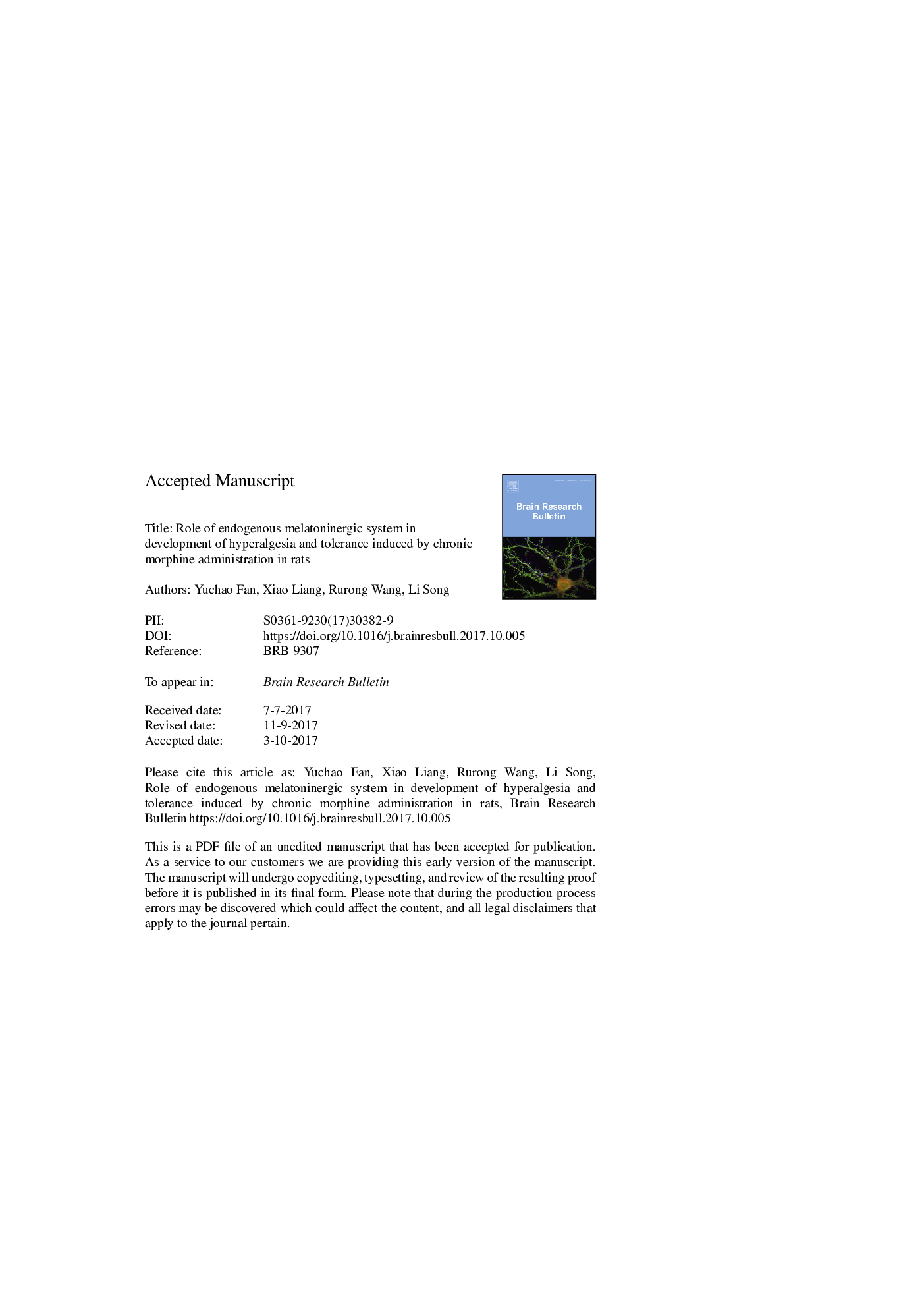| Article ID | Journal | Published Year | Pages | File Type |
|---|---|---|---|---|
| 8839071 | Brain Research Bulletin | 2017 | 24 Pages |
Abstract
Morphine is a widely used analgesic for various types of pain. However, its efficacy is impeded by development of hyperalgesia and tolerance. Melatonin has antinociceptive effect and is involved in morphine-induced hyperalgesia and tolerance but the mechanism of its involvement remains to be defined. In this study, we established a rat model of morphine-induced hyperalgesia and tolerance. We determined the serum level of melatonin and expression of μ-opioid receptor (MOR), melatonin receptor (MT1, MT2) and protein kinase C γ(PKCγ) in the spinal dorsal horn of the rats with morphine-induced hyperalgesia and tolerance. Comparing with control group (n = 6), the group (n = 6) of rats with morphine-induced hyperalgesia and tolerance exhibited a significant lower serum melatonin level, reduction in expression of the MT1, but up-regulation of the PKCγ in the spinal dorsal horn. These results may facilitate revealing the mechanism of opioid-induced hyperalgesia and tolerance and exploring new therapeutic remedy for pain management.
Related Topics
Life Sciences
Neuroscience
Cellular and Molecular Neuroscience
Authors
Yuchao Fan, Xiao Liang, Rurong Wang, Li Song,
